Solar autonomy (“off-grid”), the practical guide!
By Julien ALLERA, expert in solar autonomy.

In this guide to solar autonomy, we will discuss the main principles. Loff-grid solar autonomy) means meeting all your energy needs with the power of the sun — without any assistance from the power grid. To achieve this, it is necessary to install a solar device coupled with an energy storage system. The use of solar batteries is therefore essential.
Once seen as a marginal idea due to its bulk and dissuasive costs, the installation of an off-grid solar system has seen its popularity grow. Advances in solar technology over the past decade have made solar equipment more efficient and less expensive. This has led to a democratization of this type of solution. . It is now quite common to see, for example, country chalets, or even alternative habitats (Yurt, Tiny House), entirely powered by off-grid solar autonomy systems.
If the idea of purchasing an off-grid solar standalone system appeals to you, you've come to the right place. In this blog, we will provide you with the essential information about off-grid solar self-sufficiency systems before you make your purchase. We will help you determine whether such a system is suitable for your needs. We will try to guide you on how to choose the system that will perfectly meet your requirements.
Essential points for approaching solar autonomy:
- An off-grid, off-grid solar system uses solar panels, a battery storage solution, and additional equipment to provide energy to a location without relying on the EDF network. Its applications are varied; it can provide electricity for campsites, motorhomes, boats, remote chalets, and of course houses and villas.
- Before tackling a solar autonomy project, it is essential to determine the size of the system that would suit you. Two approaches are possible: either based on your current electricity consumption, or carrying out a careful assessment of the load.
- The cost of an off-grid solar kit capable of powering a residential house can vary from €8 to €000, depending of course on the powers and capacities required.
What is an autonomous solar system?
When talking about off-grid autonomy, many only think of solar panels, when in reality there are many other components needed to get an off-grid photovoltaic system up and running.
A complete off-grid solar system has all the equipment necessary to generate, store, and deliver solar energy on site. Operating without connection to EDF, these systems are also known as “autonomous solar systems” or soff-grid solar systems.
Unlike other solar setups, like the more common grid-tied solar system, off-grid solar self-sufficiency systems rely on batteries to provide power in the absence of sun.
However, batteries remain expensive — much more so than the solar panels they are associated with. The need for significant battery storage makes these systems much more expensive than grid-tied solar systems.
What are the different possible uses of a solar autonomy system?

One of the biggest advantages of solar as an energy source is its modularity. Indeed, a SUNCONNECT 3K-RS system for example can be modulated in power and capacity via the subsequent addition of batteries for example and/or panels:
Here are some of the most common applications of off-grid solar autonomy:
- Power supply for Tiny houses, mobile homes, chalets, etc.
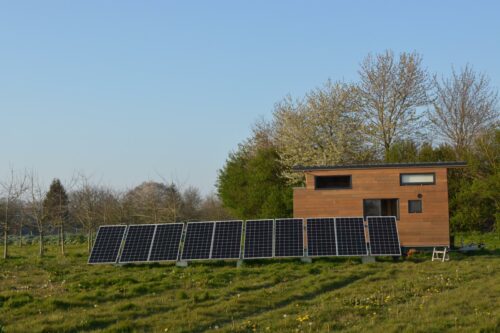
- Powering homes of all sizes
It is important to note that sometimes an off-grid solar system will not be economically relevant. For example, where access to energy from the EDF network can be considered. This concerns situations where we seek to power a house in an urban environment, for example. In this case, a hybrid solar kit will be more suitable and will allow you to maximize your self-consumption. In addition, you will have energy self-sufficiency in the event of a power outage. But most of the time, the connection costs by ENEDIS for homes far from the networks are exorbitant, and more than justify the investment in autonomous solar power!
ENEDIS quote for connection at 700m: €85!
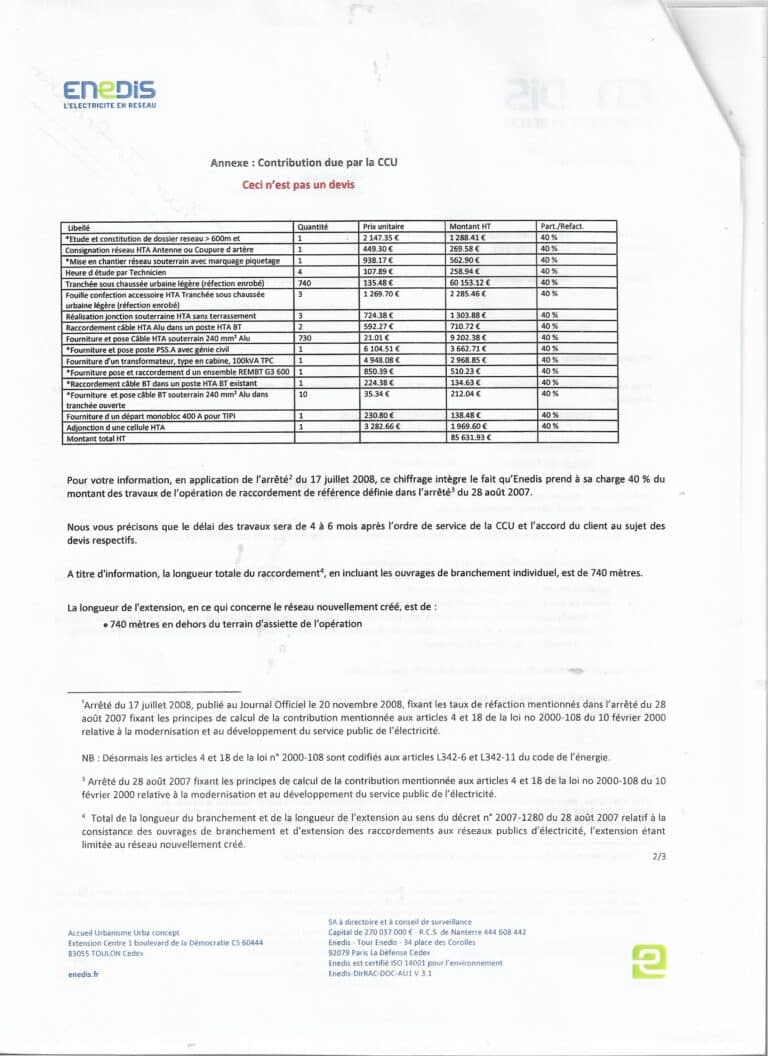
Video presentation of an off-grid system
Solar self-sufficiency with EDF (hybrid mode)
France 3 testimony on an autonomous solar system
What are the design stages?
Before acquiring any equipment needed for a solar (hybrid) or off-grid energy system, it is crucial to master the fundamentals of designing and sizing energy storage systems. As illustrated below, the first step is to develop a charging profile via our calculator, to estimate the amount of energy you will consume on site on a daily basis.
Example (click on this link to access the online excel calculator) :
Step 1 – Evaluation of consumption in kWh:
The most crucial element in the design of an off-grid solar system is the estimation of the energy required on a daily basis in kWh. For grid-connected sites, accurate load profile data can be obtained by using meters to directly measure loads. For off-grid or stand-alone systems, always start by using our off-grid load calculator for summer and winter needs. The load table will also help calculate peak loads, power factors, and maximum demand needed to size the appropriate system. Be careful to distinguish between the notions of kW (power) and kWh (energy)!
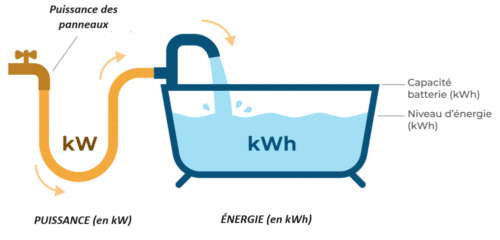
Step 2 – Battery Sizing:
Battery capacity is measured in Ah or Wh. THE Nickel-Iron batteries are sized in Ah (to obtain the capacity in KwH, you must multiply the capacity in Ah x the voltage, for example 200Ahx48V = 9.6 kWh of nominal energy), while the capacity of the batteries lithium is measured in kWh. All loss factors must be considered to ensure the battery size is sufficient to meet the loads, including the maximum allowable depth of discharge (DoD), which will also have an impact on the lifespan. Also consider battery type and chemistry, battery voltage range, minimum run-time days (continuous days without sunlight), and maximum battery charge rate (C rating), as explained further in detail later.
Step 3 – Sizing the solar installation
It is necessary to have a correctly sized solar installation to charge the battery while powering the loads. To ensure the solar installation is large enough, consider local conditions, including average solar irradiance throughout the year (peak sunlight hours), shading issues, orientation and panel tilt angle, cable losses, and thermal degradation (loss factors). The PVGIS solar design tool can help estimate solar generation throughout the year, based on the orientation and location of the panels.
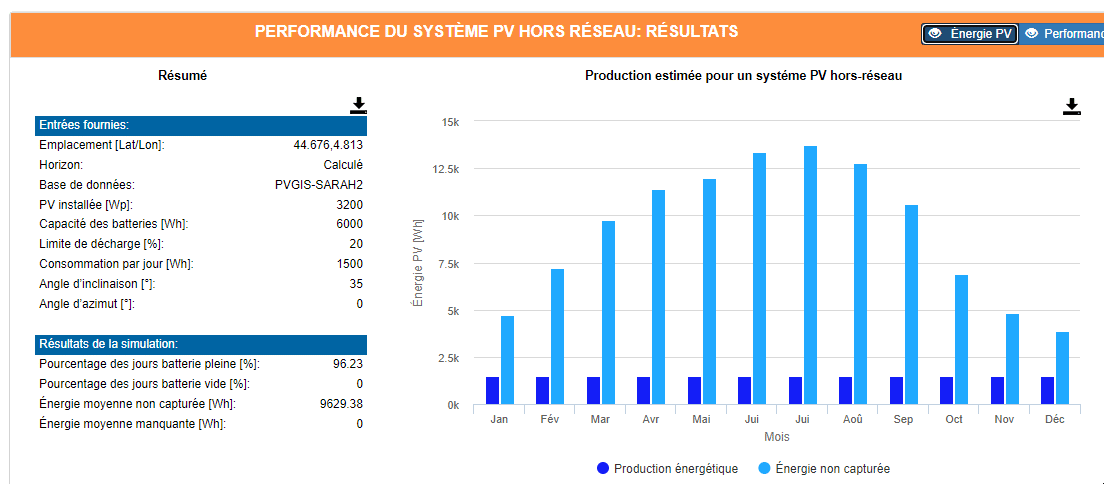
Step 4 – Selection of inverter-charger
Once steps 1 to 3 are done, you then need to choose a suitable inverter charger, as well as an MPPT solar charge controller to match the solar installation based on the length of the panels and strings, which will determine the voltage Chains. Use a chain tension calculator to estimate the maximum and minimum chain tensions, which will help you determine the choice of the most suitable MPPT charger (I used the example of the Victron MPPT calculator in this case). Then, the battery inverter-charger can be selected to meet your continuous and peak load needs.

How to select the right battery inverter?
1. Inverter output power – maximum continuous and peak values (kW)
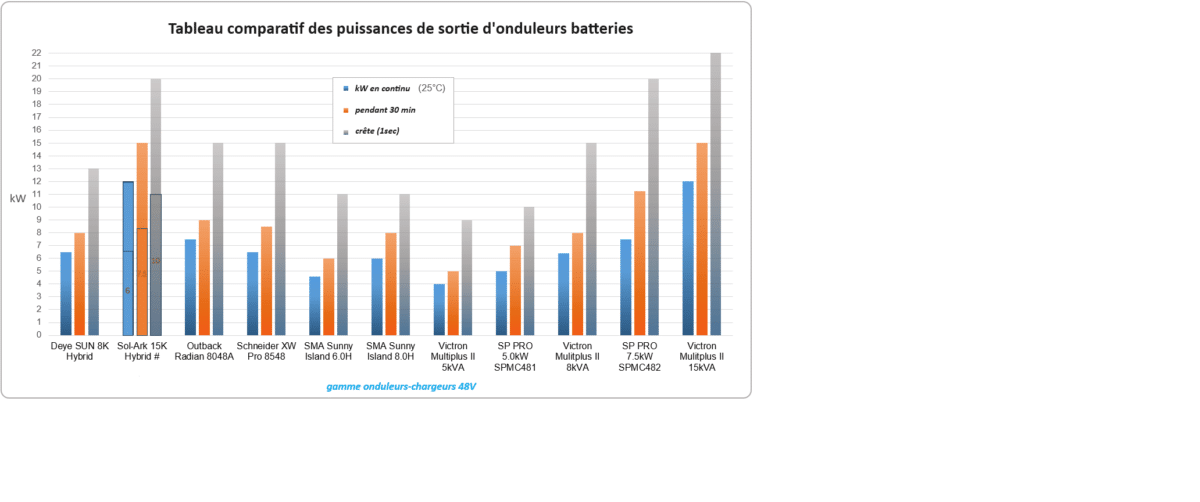
Ppower in KVA or kW? What do we choose?
2. Inverter charging capacity (generally expressed in A):
3. Size of photovoltaic installation (kW)
4. Passing/transfer power (A):
5.Battery Compatibility – System Voltage and Battery Type
It is crucial to ensure that the battery inverter is compatible with the system voltage and the type of battery used, whether lithium, nickel-iron, or other batteries. For example, a Multiplus-II 48V will have to be equipped with a 48V battery pack, obviously, etc.
6. System architecture type: DC or AC Coupling?
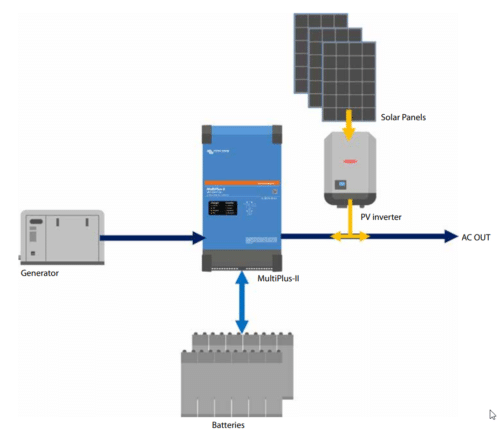
So what would be the best architecture for a robust off-grid system?
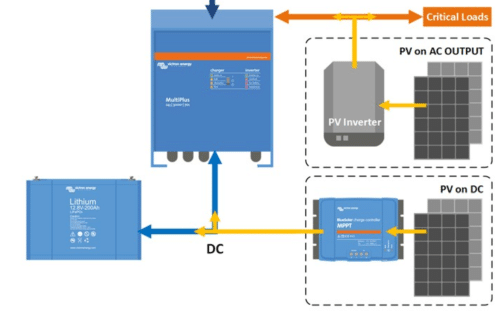
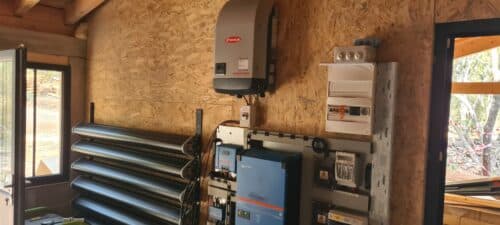
Opposite, an extract from a dashboard of the system Victron VRM monitoring. There we can track detailed parameters, such as battery voltage, state of charge, powers and various voltages, all in real time.
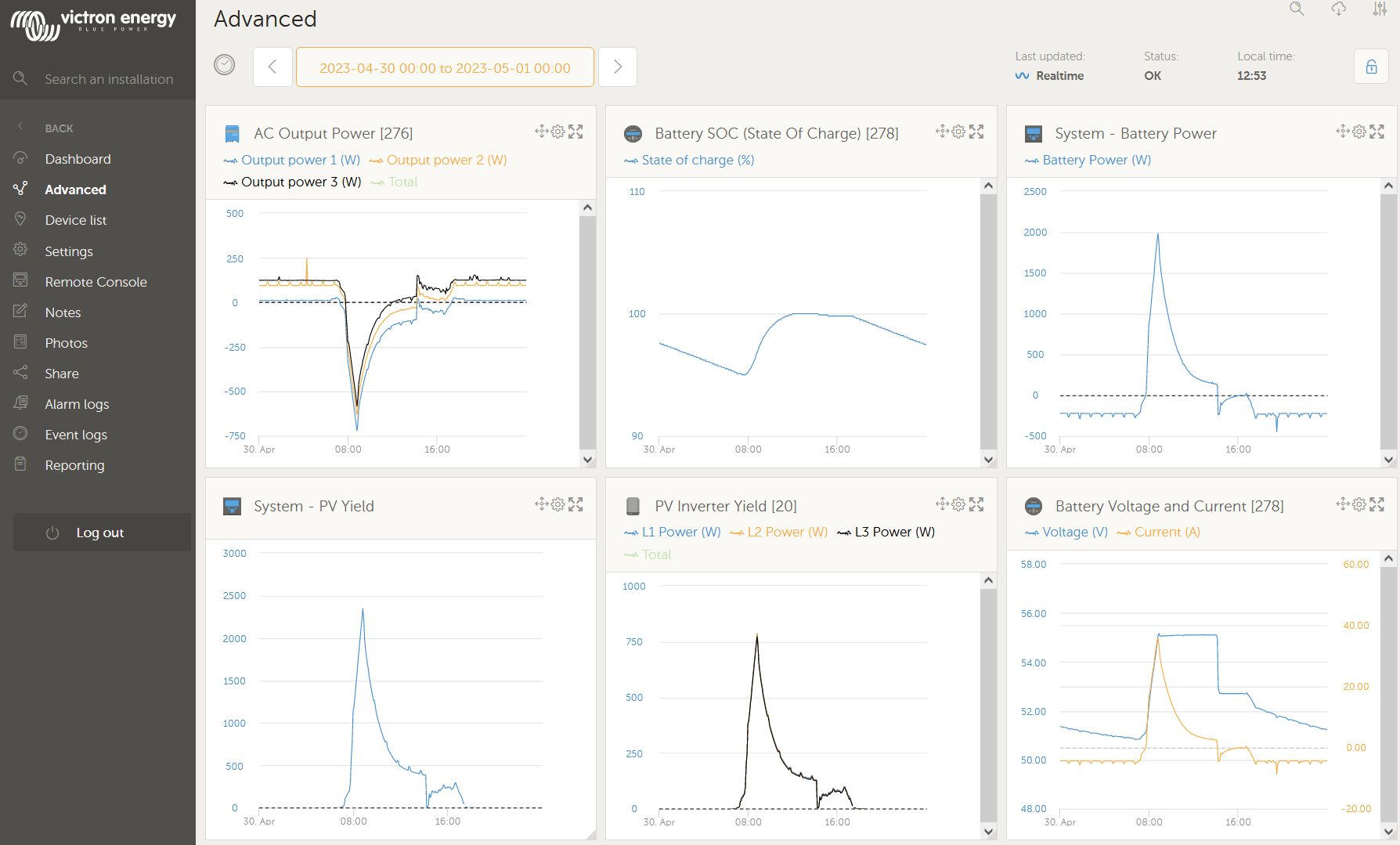
What kind of battery to choose?
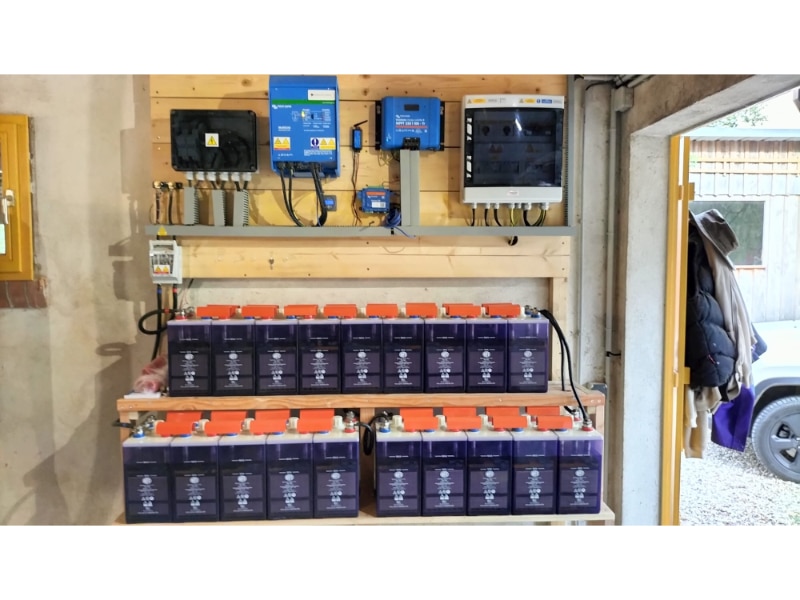
Historically, most battery inverters were designed to work with the widely available lead-acid batteries (Gel, AGM and OpZ). Lead-acid batteries are larger, heavier and can emit gases requiring ventilation. They inherently have a limited lifespan and do not tolerate any abuse or handling errors (deep discharge, temperatures, sulphation, etc.). In comparison, lithium-ion batteries are lighter, compact, more efficient, and can be stored safely in a sealed enclosure, while being modular. Many lithium battery systems, such as those of BYD, Pylontech or TESVOLTS, feature integrated battery management units (BMS), requiring an inverter with compatible communications (CANbus network protocol) to operate safely and efficiently. We have to date several hundred lithium batteries deployed in isolated sites with excellent feedback and anedoctic failure rates (around 1%).
Concerning the BMS management system, some lithium batteries are self-managed, for example the Zenaji Aeon lithium titanate batteries.
For off-grid systems, Nickel-Iron Edison batteries are an excellent choice, given their robustness and tolerance to abuse (prolonged deep discharges, temperatures, etc…). They have a lifespan of several decades, when properly sized and managed. One of the biggest advantages of NiFe batteries is that they do not shut down under low voltage or low state of charge (SOC), unlike modern lithium batteries. On the other hand, they will require regular maintenance (quarterly addition of demineralized water).
